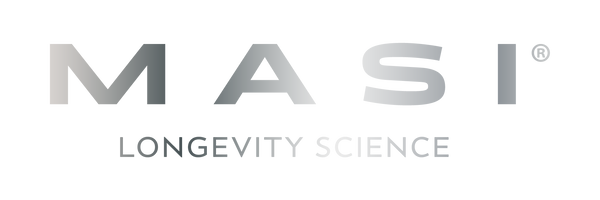Sleep biomarkers help doctors understand and treat sleep disorders by measuring specific biological signals. These include melatonin levels, brain activity, inflammation markers, movement data, and chemical changes during sleep. Here's a quick breakdown:
- Melatonin Levels (DLMO): Tracks your circadian rhythm to diagnose issues like delayed or advanced sleep phases.
- Brain Activity (EEG): Measures electrical signals to identify sleep stages and diagnose disorders.
- Blood Markers (IL-6, CRP): Reveals how inflammation affects sleep quality.
- Movement Tracking (Actigraphy): Monitors sleep-related movements to distinguish between sleep and wake periods.
- Chemical Changes (Cortisol, Adenosine): Evaluates stress and sleep pressure to understand sleep quality.
These biomarkers work together to create a full picture of sleep health, leading to more accurate diagnoses and personalized treatments.
Scalable Biomarkers of Neurodevelopmental Disorders ...
1. Melatonin Levels in Low Light (DLMO)
DLMO testing tracks the natural rise in melatonin, which occurs 2–3 hours before sleep, to monitor circadian rhythms and diagnose sleep-wake disorders.
This test involves collecting saliva samples every 30–60 minutes under dim lighting (below 30 lux). It begins 6 hours before bedtime and continues until 2 hours after.
Key Clinical Uses:
- Diagnosing circadian rhythm sleep disorders
- Pinpointing the best timing for light therapy
- Evaluating the success of sleep treatments
- Identifying delayed or advanced sleep phase syndromes
Testing Protocol:
- Keep light exposure under 30 lux
- Collect samples at regular intervals
- Avoid food or drink contamination
- Maintain consistent posture and activity levels
DLMO testing is especially helpful in pediatric sleep medicine, where standard sleep studies can be hard to perform. Saliva collection is non-invasive, making it a practical choice for children and teens with suspected circadian rhythm issues.
For adults, normal DLMO timing is between 7:30–9:30 PM. An earlier onset (before 7:30) indicates advanced sleep phase disorder, while a later onset (after 9:30) suggests delayed sleep phase disorder. Irregular timings may signal a non-24-hour rhythm.
Clinicians rely on DLMO results to fine-tune treatment plans, such as scheduling light therapy or melatonin supplements for better outcomes.
Next, we’ll dive into brain activity during sleep using EEG.
2. Brain Activity During Sleep (EEG)
EEG tracks brain activity during sleep by measuring electrical signals on the scalp. This helps identify transitions between different sleep stages.
Here are some key brain wave patterns detected by EEG:
| Wave Type | Frequency (Hz) | Associated Sleep Stage | Clinical Relevance |
|---|---|---|---|
| Delta | 0.5–4 | Deep sleep (N3) | Linked to restorative sleep quality |
| Theta | 4–8 | Light sleep (N1 & N2) | Marks transitions into and within sleep |
| Alpha | 8–13 | Drowsiness/Wakefulness | Seen during the onset of sleep |
| Beta | 13–30 | Wakefulness/REM | May indicate arousal periods |
| Gamma | >30 | REM | Tied to cognitive activity during dreams |
EEG provides a detailed view of brain activity during sleep, making it a key tool for diagnosing sleep disorders and assessing treatment effectiveness. It works alongside other biomarkers to improve the accuracy of sleep disorder evaluations.
sbb-itb-4f17e23
3. Sleep-Related Blood Markers (IL-6, CRP)
Blood markers like Interleukin-6 (IL-6) and C-Reactive Protein (CRP) can reveal how inflammation impacts sleep quality. IL-6 follows a natural daily rhythm tied to normal sleep patterns, but disruptions can throw this off. On the other hand, higher CRP levels are often linked to poor sleep, showing the body's inflammatory response to sleep disturbances.
4. Movement Tracking Data
Actigraphy plays a key role in monitoring sleep-related movements alongside biochemical and brain activity markers. This non-invasive method uses devices to track nighttime activity, making it easier to distinguish between sleep and wakefulness. With advancements in technology, actigraphy provides real-time data that supports clinical decision-making and improves sleep evaluations. Its straightforward design also makes it ideal for long-term use in various clinical environments.
5. Sleep-Related Chemical Changes
Tracking chemical changes during sleep offers a deeper look into sleep quality and overall health. Two key biochemical markers - cortisol and adenosine - play a critical role in understanding how well we sleep.
Cortisol, often called the "stress hormone", follows a daily rhythm. It stays low during the early night and peaks in the morning when you wake up. By analyzing timed saliva samples, experts can evaluate how well your sleep and wake cycles are regulated.
Adenosine, on the other hand, builds up in the brain while you're awake, creating something called "sleep pressure." This pressure helps you feel sleepy. During sleep, adenosine levels drop, allowing your brain to recover and reset.
Disruptions in these markers can signal problems. Irregular cortisol patterns are linked to sleep issues like insomnia, while disturbances in adenosine levels can make it harder to fall or stay asleep. Together, these markers provide valuable insights into sleep health, complementing other physical and behavioral data.
New methods for testing these biomarkers make it easier for patients to monitor their sleep chemistry, paving the way for more tailored treatment options.
Conclusion
By combining melatonin levels, EEG data, blood markers, movement tracking, and sleep-related chemicals, clinicians can create tailored treatment plans. This method provides detailed sleep profiles, helping to guide more specific and effective interventions.
Recent progress in sleep monitoring has made these tools more accessible. Portable EEG devices and wearable sensors simplify data collection, making assessments quicker and easier. These advancements highlight the benefits of using multiple data points to better understand sleep issues.
This approach excels at identifying subtle disruptions that might be overlooked when relying on a single marker, leading to more precise and effective treatments.
Looking ahead, artificial intelligence is poised to analyze these complex datasets, enhancing sleep pattern analysis and pushing personalized sleep medicine even further.
This blend of technology and biomarker analysis positions MASI Longevity Science to lead the way in delivering precise, cutting-edge sleep monitoring and treatment solutions.




